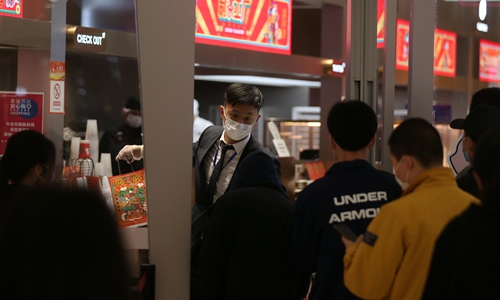
After two months confined at home, residents in Wuhan queue up in front of a milk tea shop when the city's shopping areas begin to reopen. Photo: Cui Meng/GT
Wuhan city in Central China's Hubei province has decided to dole out 500 million yuan ($70 million) in consumption coupons starting from Sunday, and the move is expected to drive 1.5 billion yuan worth of consumption in the city, experts say.
The first allotments of vouchers were distributed via the country's major digital platforms, including Meituan-Dianping, Alipay and WeChat, and they are valid till April 29.
All people in Wuhan can use the coupons and participate in the shopping campaign. Meanwhile the city has also set up special subsidies worth 18 million yuan for low-income residents.
The coupons can be used at restaurants, shopping malls, convenient stores, and cultural, sports and tourist venues in Wuhan when the actual payment exceeds three times the amount of the coupons.
"I got 20 yuan coupons for supermarket this afternoon. It should be useful. The payment threshold is appropriate. Go out and buy food and daily necessities once a week and you can easily reach the threshold and use the coupons," a consumer from Wuhan told the Global Times on Sunday.
People in Wuhan have actively participated in the shopping promotional campaign, Dong Dengxin, director of the Finance and Securities Institute at Wuhan University told the Global Times on Sunday.
"The consumption subsidy is practical for many families in the city. Although the amount is not that huge, it is a very good incentive for the public to accelerate spending both online and offline," he said.
Dong expects the first batch of coupons can have a leverage effect to help boost consumption two to three times the value of the coupons.
According to statistics, up to 50 cities in China have issued consumer coupons, 80 percent of which target the catering industry, followed by tourism, which accounts for 42.5 percent.
